
58 Picture Books for ANZAC Day
ANZAC Day is this week, a day in which we commemorate our fallen, returned and current Service men and women, we remember their sacrifices past and present. I have been gathering picture books to assist and answer questions that are sure to arise as books are always a great gateway to discussions. Imagine my shock when I easily discovered 58 picture books for ANZAC Day!! Truth is I had to call a halt and stop looking for anymore! In this collection I have included both Australian and New Zealand authors – ANZACs; Australian New Zealand Army Corps. ANZAC Day is this week, a day in which we commemorate our fallen, returned and current Service men and women, we remember their sacrifices past and present.
If you are wanting even more book suggestions, I recommend you check out this fantastic site, Children’s War Books compiled by New Zealand author Phillipa Werry. There are loads more books there with fantastic and comprehensive reviews.
*ETA: Found and added even more titles! Couldn’t help myself, up to 62 so far!!
Online Database of Australian Books
Be sure to head on over to our Online Database of Australian Books to find more books about our War Years.
Anzac Day
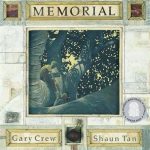
The town is planning on removing the local War Memorial to make room for a highway and a young lad wants to fight to keep the memorial.
We follow a young boy as he talks to his family; his great grandfather, his grandfather and father who all fought in different wars and share their perspectives.
A Day to Remember – Jackie French
ANZAC Day is the day in which we remember and honour the ANZACs. This book ties in the traditions from the various wars from the first march of wounded veterans in 1916 through to today, includes the Dawn Service etc. Covers the many places the ANZACs have fought and the ways in which they keep the peace and support the civilians in war-torn parts of the world. Aimed at the over 7 set full of historical facts.
My Grandad Marches on Anzac Day – Catriona Hay
A little girl goes to the pre-dawn Anzac Day service with her father as they watch her grandfather march in the parade.
A simple explanation for the younger child of what happens on Anzac Day and the meaning of Anzac Day.
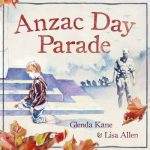 Anzac Day Parade – Glenda Kane
Anzac Day Parade – Glenda Kane
A poignant look at war through the eyes of a former member of the 18th Battalion. Told in rhyme it takes place on Anzac Day when an old man and a young boy meet – the young boy wide-eyed and wanting to hear the glories of war and death; the old man quietly sad to remember the reality of what was faced. Age won’t weary him, he said but boy it’s wearied me, he looked out over the young one’s head and the past was all he could see.
 Forward March – Christobel Mattingley
Forward March – Christobel Mattingley
On Anzac Day in Australia, people of all ages and nationalities gather at war memorials for the dawn service and line city streets for the march. On this national day of mourning and commemoration, they honour the men and women who returned from war and the sons, fathers, grandfathers and good mates who did not.
Remembrance Day
One Minute’s Silence – David Metzenthen
In a classroom, whilst observing ‘One Minute’s Silence’ on Remembrance Day, Australian teens reflect the different scenes and feelings the soldiers on both sides would have felt. You can imagine sprinting up the beach in Gallipoli in 1915 with the fierce fighting Diggers, or could imagine standing beside the brave battling Turks as they defended their homeland from the cliffs above. Extremely thought provoking.
Healing & Reflection
A young boy visits his granddad and thinks about the important days in his life: his first day of school, playing soccer with his team, the day his baby sister was born.
Yet through the illustrations the reader sees a parallel story of the grandfather’s experiences at war: wearing his brand-new soldier’s uniform, with his fellow diggers in the field, looking at a photo of the baby he’s never met.
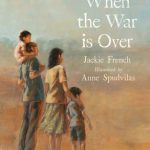 When the War Is Over – Jackie French
When the War Is Over – Jackie French
This is a powerful and moving book. Created from a poem, When the War is Over doesn’t focus on one particular war, but covers a wide period from WW1 to current-day peacekeeping around the world.
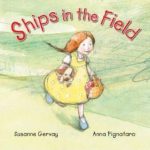 Ships in the Field – Susanne Gervay
Ships in the Field – Susanne Gervay
Australia is an immigrant nation with many stories. Ships in the Field crosses boundaries in a universal recognition that children are part of the journey of war, migration, loss and healing.
Reflection : Remembering Those Who Serve in War – Rebecka Sharpe Shelberg
A family journeys through the early morning darkness … A group of young men huddle in a cold muddy trench … Reflection is a powerful tribute to those who have served their country.
World War 1
Based on a true exchange between Lance Corporal A. McDougall and a young girl, Message in a Sock is a gorgeous collage-style tale which pays respect to the ANZACs and their families, a century after the end of World War I.
“Dreaming Soldiers” weaves tales of childhood adventures and battlefield challenges with gentle Dreaming themes.
This is a touching friendship story about Jimmy and Johnno, two young Australian boys in the 1900s; mates who do everything together, sharing adventures and growing up side by side in the dusty cattle yards of an Outback South Australian station and later on the muddy WWI battlefields of the Western Front.
Rachel Bin Salleh’s poignant narrative opens our hearts to the sacrifice and contribution that Indigenous people have made to Australia’s war efforts, the true extent of which is only now being revealed.
 And the Band Played Waltzing Matilda – Eric Bogle, illustrated Bruce Whatley
And the Band Played Waltzing Matilda – Eric Bogle, illustrated Bruce Whatley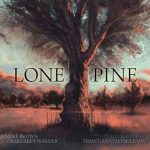 Lone Pine – Susie Brown & Margaret Warner
Lone Pine – Susie Brown & Margaret Warner
Three brothers sign up and are sent to Gallipoli. They send pine tree seeds home from Gallipoli to their mother, one of the boys doesn’t survive.
In remembrance the seeds are planted in the boys’ home town, and eventually pine trees are planted around Australia in remembrance of all lost in the War. We had no idea of the background of the pine trees, so interesting. This book totally captured the children’s interest.
When her brother, James, went to war, Annie stitched the name Digger onto her toy kangaroo and gave him to James as a farewell present.
‘A Digger for a digger,’ she said, hugging her brother. I’ll keep him safe,’ James promised.
Digger is the story of one toy kangaroo, one Australian soldier and two girls, in two countries on opposite sides of a world at war. It’s a tribute to the French schoolchildren who once tended the graves of Australian soldiers who died on the Western Front in the heroic battle for Villers-Bretonneux in April 1918.

The House That Was Built in a Day Anzac Cottage – Valerie Everett
On 12 February, 1916, two hundred residents of Mount Hawthorn in Perth, Western Australia rallied together to build a cottage over the course of a single day for one of the first wounded ANZAC soldiers to return from Gallipoli.
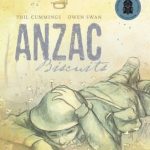
Anzac Biscuits – Phil Cummings
Rachel and her mother bake biscuits in their kitchen, warm and safe. Far away her father is in the trenches, cold and afraid. They send the biscuits to her father with love. “This is a touching story of a family torn apart by war but brought together through the powerful simplicity of Anzac biscuits.” Every year on ANZAC Day we bake these bikkies
Dusty and Bluey are Anzacs, members of the Light Horse Brigade and are sent to Egypt to train. Then they are sent to Gallipoli to fight the Turkish soliders where they face hardship and fear and find mateship and bravery. Discusses trench warfare, the food,meeting Simpson and his donkey and the eventual withdrawal from Galliopoli.
Covers an pivotal battle of Australians at War in a non-threatening way for children.
Simpson and His Donkey – Mark Greenwood
Jack Simpson a stretcher-bearer in Gallipoli along with his donkey, Duffy rescues hundreds of wounded men. Including his childhood friend Billy. Always a popular book with the children.
A true tale of a World War I cavalry soldier and his heroic horse, Midnight. Guy Haydon raised and trained Midnight from the time she was a foal. The two had such a strong bond that when World War I broke out, Lieutenant Haydon slipped away from the frontlines of Gallipoli on an Egypt-bound ship to reunite with his horse. There, in the city of Beersheba, on October 31, 1917, two regiments of the Australian Light Horse Brigade took part in one of the last great cavalry charges in history. Among the first to leap the enemy trenches was Lieutenant Guy Haydon, riding Midnight–who succumbed to a bullet that might have otherwise killed her rider.
A Soldier, A Dog and A Boy – Libby Hathorn
A moving story about a young Australian soldier in the battle of the Somme. Walking through the fields away from the front, he finds what he thinks is a stray dog, and decides to adopt it as a mascot for his company. Then he meets Jacques, the homeless orphan boy who owns the dog. The soldier realises that Jacques needs the dog more and perhaps needs his help as well.
A young soldier finds himself in a trench with an enemy soldier in World War 1, a dog goes for help.
Led to plenty of discussions about ‘our enemies’ in war.
Meet Anzac Ted – Belinda Landsberry
Anzac Ted is the powerful story of a little boy’s teddy bear that was passed down to him from his grandfather. Battered, torn, missing an eye and an ear, he might look scary but he’s got a great story to tell. For Anzac Ted went to war, keeping soldiers company and giving them comfort. And while he never won a medal if only everyone looked a little deeper: ‘They’d see a hero, plain as day Who sits upon my bed. A hero, who saved me and you. His name … is Anzac Ted.’
Once a Shepherd – Glenda Millard
The Great War comes and Tom the shepherd must leave his beloved wife and his unborn child and go off to fight but he never returns. One day a fellow soldier returns instead bringing Tom’s coat which had been woven by his wife.
So poignant, sobbed throughout.
The Soldier’s Gift – Tony Palmer
A young soldier leaves his dog with his motherless, lonely sister. He sends home pine seeds and the young girl plants the seeds.
A moving story of one family’s courage and endurance during the First World War, the terrible losses at Gallipoli and a time that changed Australia forever.
 The Anzac Billy – Claire Saxby
The Anzac Billy – Claire Saxby
During World War I, Australian and New Zealand soldiers on the front were sent Christmas care packages in a tin billy. The Anzac Billy is the heartwarming story of a little boy packing a billy with all his father’s favourite things – added to by mum and grandma – even though he realises there is no way that the billy can actually go to a particular soldier.
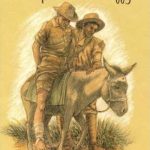 Simpson and Duffy – Mary Small
Simpson and Duffy – Mary Small
The story of John Simpson Kirkpatrick and his heroic deeds using a donkey at Gallipoli.
Night without darkness – Elizabeth Stanley
Set on a ‘birding’ island off Tasmania, Australia just as the War breaks out.
A young girl is friends with a young man who leaves for the War. We share in her grief when the news comes of his death.
This book is based on the true story of a small boy’s visit to meet Alec Campbell in the year 2001.
Alec Campbell was the last living ANZAC, and all of the Australian and New Zealand soldiers who fought at Gallipoli. He died in May 2002 at the age of 103, having enlisted in 1915 when he was just 16, stating he was 18 in order to be accepted by the army.
I remember visiting my great uncles who had fought in World War 1 as a child, in fact one of my brothers is named for them, so Alec Campbell is extra interesting for me.
World War Two
That morning, something important happened. It began with a great rumble that came in through our classroom window and rumbled on and on. We all ran out into the school yard and hung on the fence and gazed in wonder. An endless line of trucks and jeeps and tanks and weapons carriers came around the corner and along our street, all of them with big white stars on their sides. There were big cannons, too. Soldiers in the trucks waved to us. We wouldn’t have guessed there were so many trucks in the whole wide world. They rumbled right through the morning break and when we came out for lunch they still rolled by. Then they were gone, heading north to where the war was being fought.
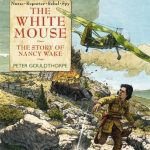 White Mouse: The Story of Nancy Wake – Peter Gouldthorpe
White Mouse: The Story of Nancy Wake – Peter Gouldthorpe
The Gestapo called her The White Mouse and they wanted her, dead or alive. Nancy Wake was an Australian who joined the French Resistance during World War II and became the most wanted woman in France. Parachuting behind enemy lines, blowing up bridges and smuggling refugees across borders, Nancy fought fiercely against the enemy and became the most decorated Australian woman in any war.
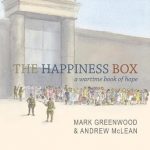 The Happiness Box: A Wartime Book of Hope – Mark Greenwood
The Happiness Box: A Wartime Book of Hope – Mark Greenwood
In 1942, Sergeant “Griff” Griffin was a prisoner of war. With Christmas approaching, he decided to make a book for the children cooped up in nearby Changi Prison. The book was said to contain the secrets to happiness. But the enemy was suspicious … An inspirational true story of a book that became a National Treasure.
What Was The War Like, Grandma? – Rachel Tonkin
A recreation of the war years from an Australian child’s view point.
Grandma Emmy remembers what the war was like. Listening to the wireless each night for news from the front-lines, crouching in trenches during air-raid drills at school, raising money and knitting socks for the war effort. Blackouts and sandbagging, but also playing with searchlights and the first taste of hamburgers. Although the fighting was far away, everyone’s lives changed forever.
Let the Celebrations Begin – Margaret Wild
An inspiring book that makes the difficult topic of a World War II concentration camp accessible to young readers.
“My name is Miriam, and this is where I live. Hut 18, bed 22.” The younger children think they have always lived in the hut, but Miriam knows better. She remembers her parents and her home, with her very own toys. In this place there are no toys. So Miriam and the women come up with a special plan, to celebrate the day when the soldiers open the gates to freedom.
Photographs in the Mud – Dianne Wolfer
Set on the Kokoda Trail, 1942. Jack and Hoshi are soldiers from opposing armies, who meet in battle and discover they have much more in common than they could ever realise. One Australian, the other Japanese, reveals the personal human tragedy of war from both the soldiers and their loved ones at home. Extremely thought provoking.
Biographies & Non-Fiction
Meet the Anzacs – Claire Saxby
Anzac stands for Australian and New Zealand Army Corps. It is the name given to the Australian and New Zealand troops who landed at Gallipoli in World War I. The name is now a symbol of bravery and mateship.
A picture book series about the extraordinary men and women who have shaped Australia’s history, including our brave Anzac soldiers.
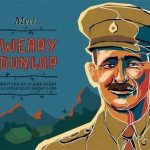 Meet Weary Dunlop – Claire Saxby
Meet Weary Dunlop – Claire Saxby
Sir Edward ‘Weary’ Dunlop was an Australian Army surgeon during World War II. This is the story of how Weary’s bravery and compassion helped to save the lives and bolster the spirits of fellow prisoners of war on the Thai-Burma Railway. Part of the series mentioned above.
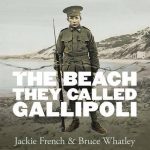 A Beach Called Gallipoli – Jackie French & Bruce Whatley
A Beach Called Gallipoli – Jackie French & Bruce Whatley
A hundred years ago, Australians and New Zealanders landed at Anzac Cove, in Turkey. This is the story of Gallipoli as see from the cove; the story of that beach, where thousands died and legends were born.
Folk Songs
Along the Road to Gundagai – Jack O’Hagan
‘There’s a track winding back, to an old-fashioned shack, Along the road to Gundagai…’
This well known folk song was about a young soldier singing of his memories of home.
Mark Wilson
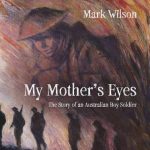 My Mother’s Eyes – Mark Wilson
My Mother’s Eyes – Mark Wilson
A young 16 year old boy lies about his age and is sent to Flanders, France. He is caught up in the horrors of World War I in Egypt and on the Western Front. This young lad doesn’t return.
Based on true stories of the twenty-three teenage soldiers – one only fourteen – who fought with the Australian army in World War I, as recorded at the Australian War Memorial, their names among a list of 60,000 Australian soldiers killed in the Great War. Told with extracts from the boy’s letters home, moving and evocative.
Twelve-year-old Kari grew up along the banks of the Kusumi River, east of the village of Kokoda. His father taught him the traditional ways of his people, and Sister Mary taught him English at the mission schoolhouse. One day Kari s peaceful world is shattered when a bomb rips through the village of Kokoda. Kari searches among the wounded and finds a young soldier lying in a ditch. The soldier is badly hurt, but Kari will not leave him. Together they make the perilous journey to safety along the Kokoda Track. For older readers.
Two brothers Leigh and Jason are close but when Jason is conscripted and sent to fight in Vietnam, they are divided not just by distance, but by their beliefs about the war as they have have opposing views of the war in Vietnam. Tragically Jason dies.
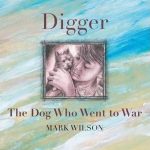 Digger:The Dog Who Went to War – Mark Wilson
Digger:The Dog Who Went to War – Mark Wilson
Matthew, a young Australian soldier, smuggles his beloved dog, Digger, onto the troop ship when he leaves to fight in World War One. At the front, Matthew works as a stretcher-bearer and Digger helps him rescue the wounded. Together, they face the triumphs and tragedies of the Western Front. Based on the true story of Driver, a puppy that was smuggled onto an Australian troop ship during World War One, shows that the bond of love and devotion between a man and his dog.
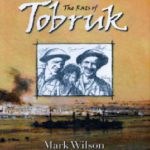
“Bandy jerked her head. I felt her shiver and neigh to the other horses. Then a hand went up in the distance, and the soldiers urged their horses into a canter.” When the shadow of war descends on Australia in 1914, a boy and his horse set off for war in the Middle East. With water rations gone, they charge the enemy across six kilometers of open ground to reach the wells at Beersheba. In one moment of dash and bravura, both Jason’s and Bandy’s destinies are set as the battle unfolds, with heroic and tragic consequences.
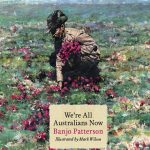 We’re All Australians Now – Banjo Patterson, Illustrated by Mark Wilson
We’re All Australians Now – Banjo Patterson, Illustrated by Mark Wilson
In 1915, Australia’s much-loved bush poet Banjo Paterson wrote as an open letter to the troops, a poem he titles ‘We’re All Australians Now’.
In this beautifully illustrated picture book, award-winning illustrator Mark Wilson evokes the spirit of Paterson’s words in memory of those who fought in World War One.
New Zealand Authors
This is the story of Bobby – the littlest hero in a very big war. Bobby is a tiny canary. His best friend is Jack, a soldier in one of the tunnelling companies of the Royal Engineers. Together they go deep into the tunnels under no-man’s-land. Jack’s job is to dig, while Bobby’s job is to warn the men to get out quickly when there’s dangerous gas. Bobby’s warnings save the tunnellers’ lives again and again.
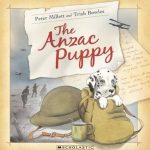 The Anzac Puppy – Peter Millet
The Anzac Puppy – Peter Millet
‘In the middle of the night, in the middle of the winter, in the middle of a war, a puppy was born.’ This fictional story was inspired by the story of Freda, a Harlequin Great Dane and mascot of the NZ Rifle Brigade during World War 1. The ANZAC Puppy is a simple story about the reality of war, hardship, friendship and love.
The three young soldiers in the story are best friends from school, and they leave New Zealand together to go and fight at Gallipoli. Landing first in Egypt, they travel by ship to Anzac Cove and dig into trenches to fight the Turkish troops holding the peninsula. Conditions are tough and Joe gets sick, but his mates help him off on the hospital ship. Then Harry is fatally wounded and his burial has to take place on the cliff-top, away from the snipers. The three friends are reunited many years later, when the two men fly to Gallipoli and lay poppies on Harry’s grave
Related Posts:
3 Indigenous Children’s Books for Anzac Day
60 Children’s Chapter Books for ANZAC Day


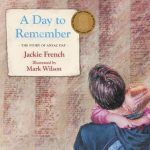
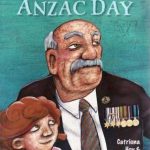

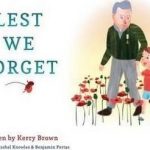
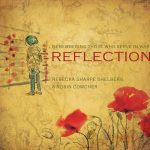
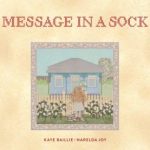
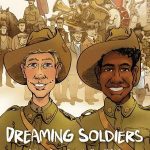
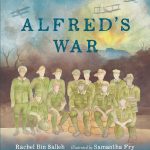
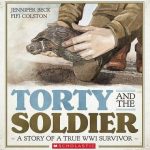
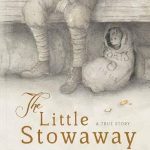
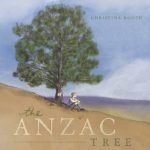
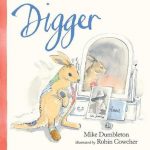
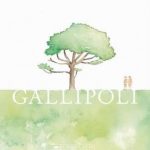

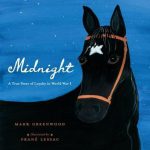
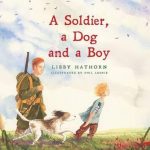
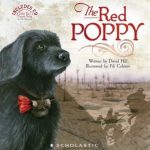
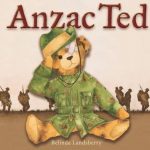
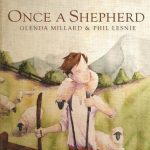
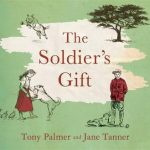

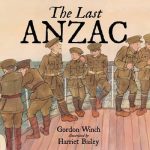
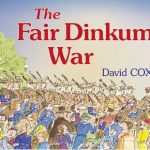
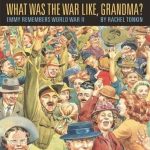
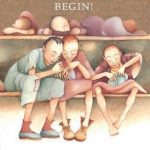
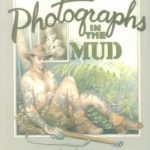
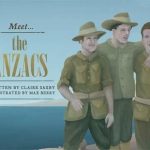
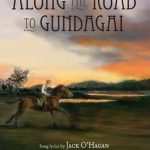
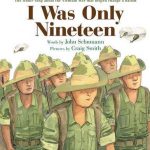
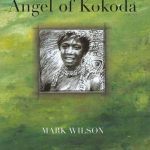
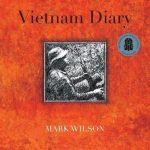
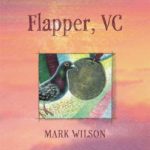
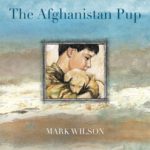
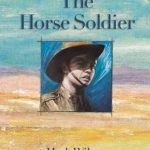
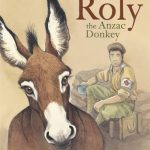
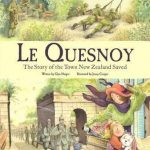
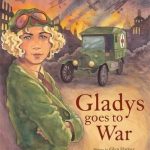
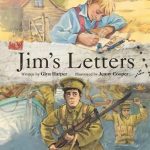
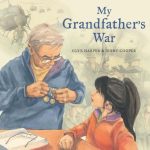
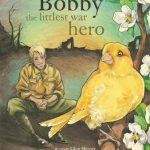
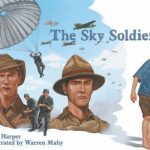
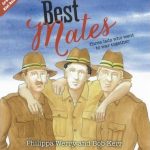



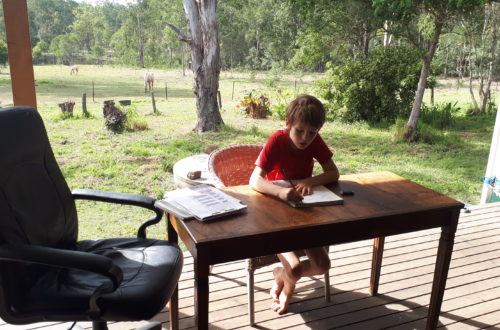
2 Comments
Rae
Thank you so much for putting this together. What a great resource!
Erin
My pleasure. It stuns me that there are so many fantastic picture books about War.